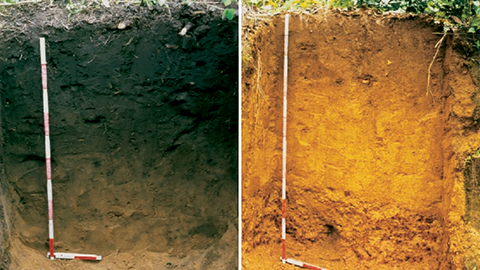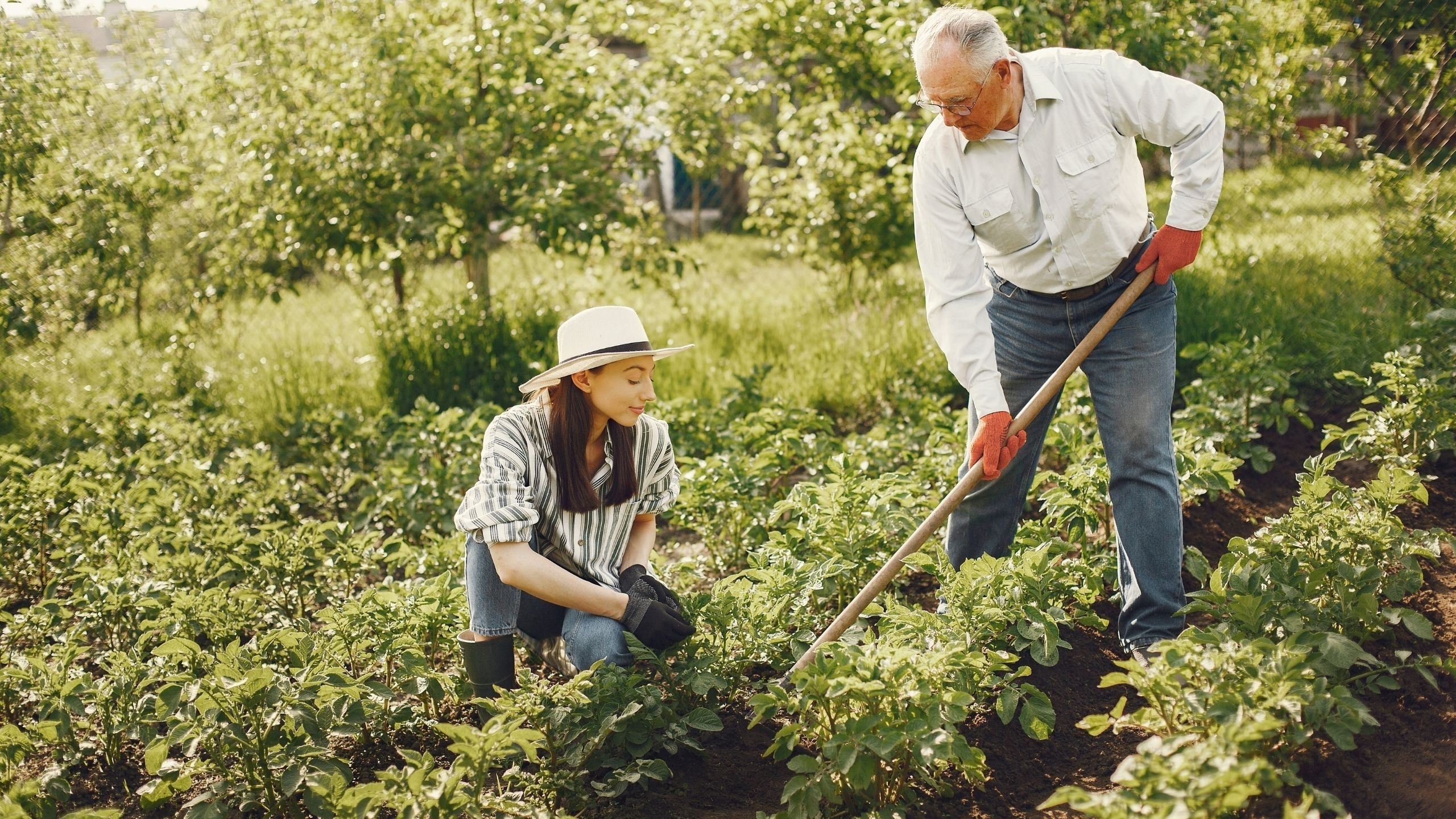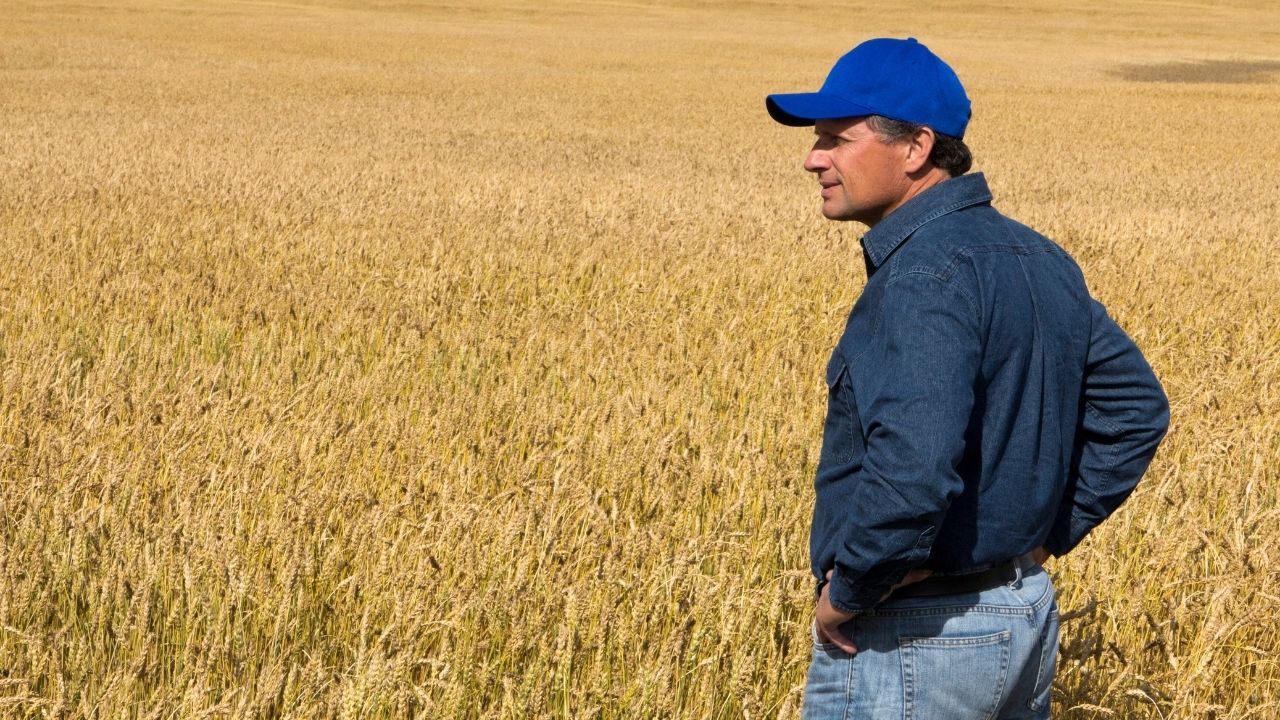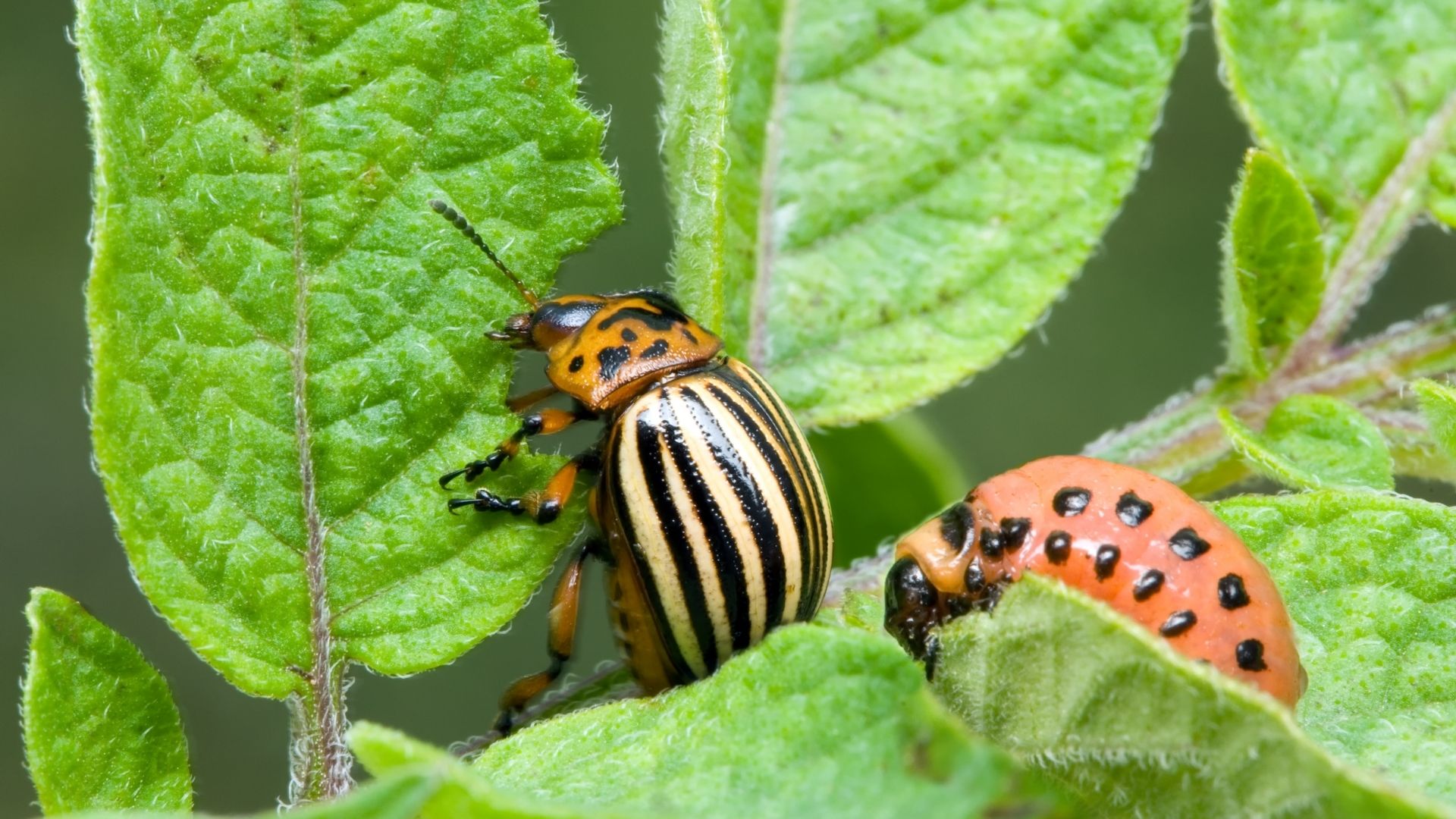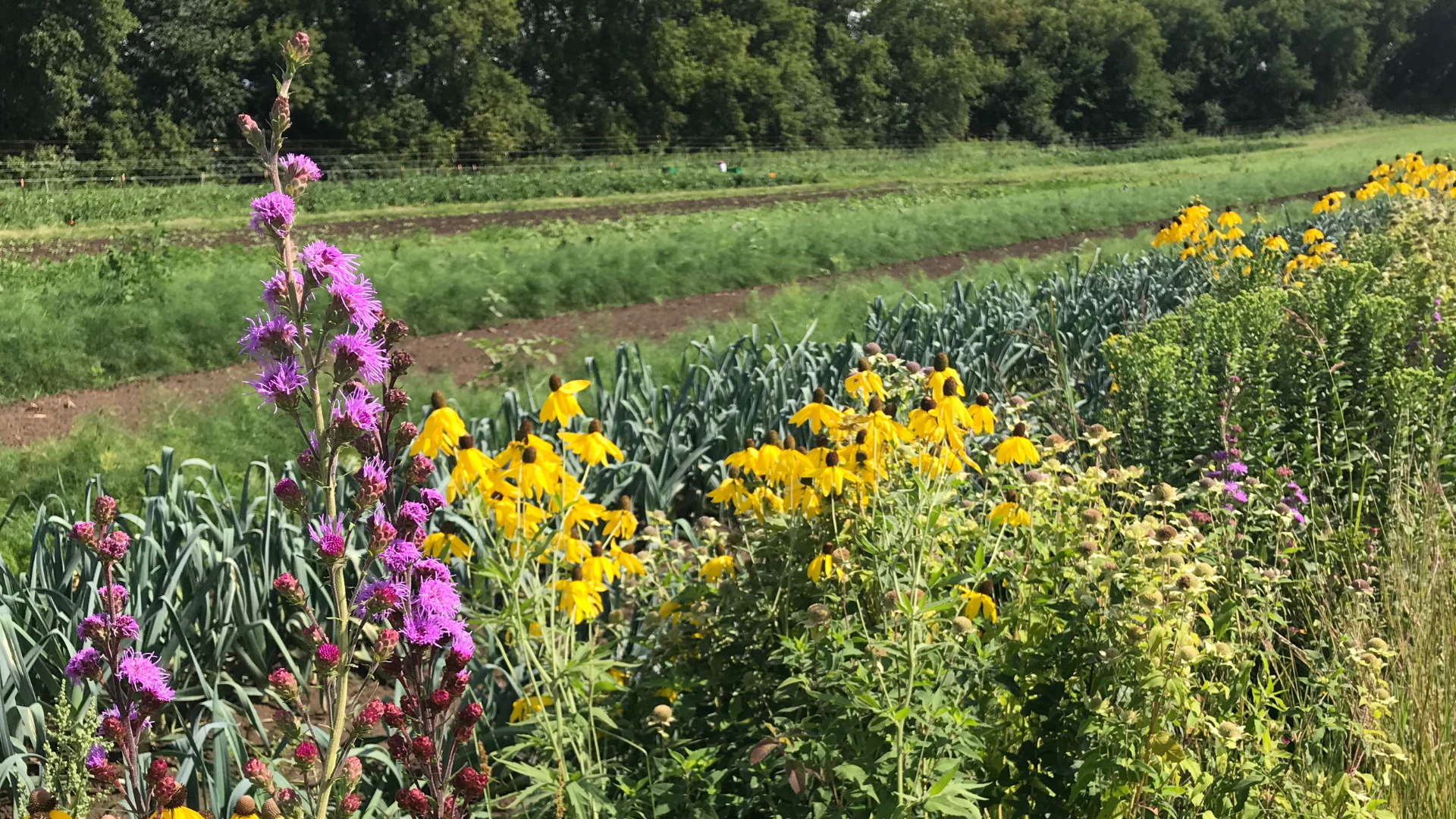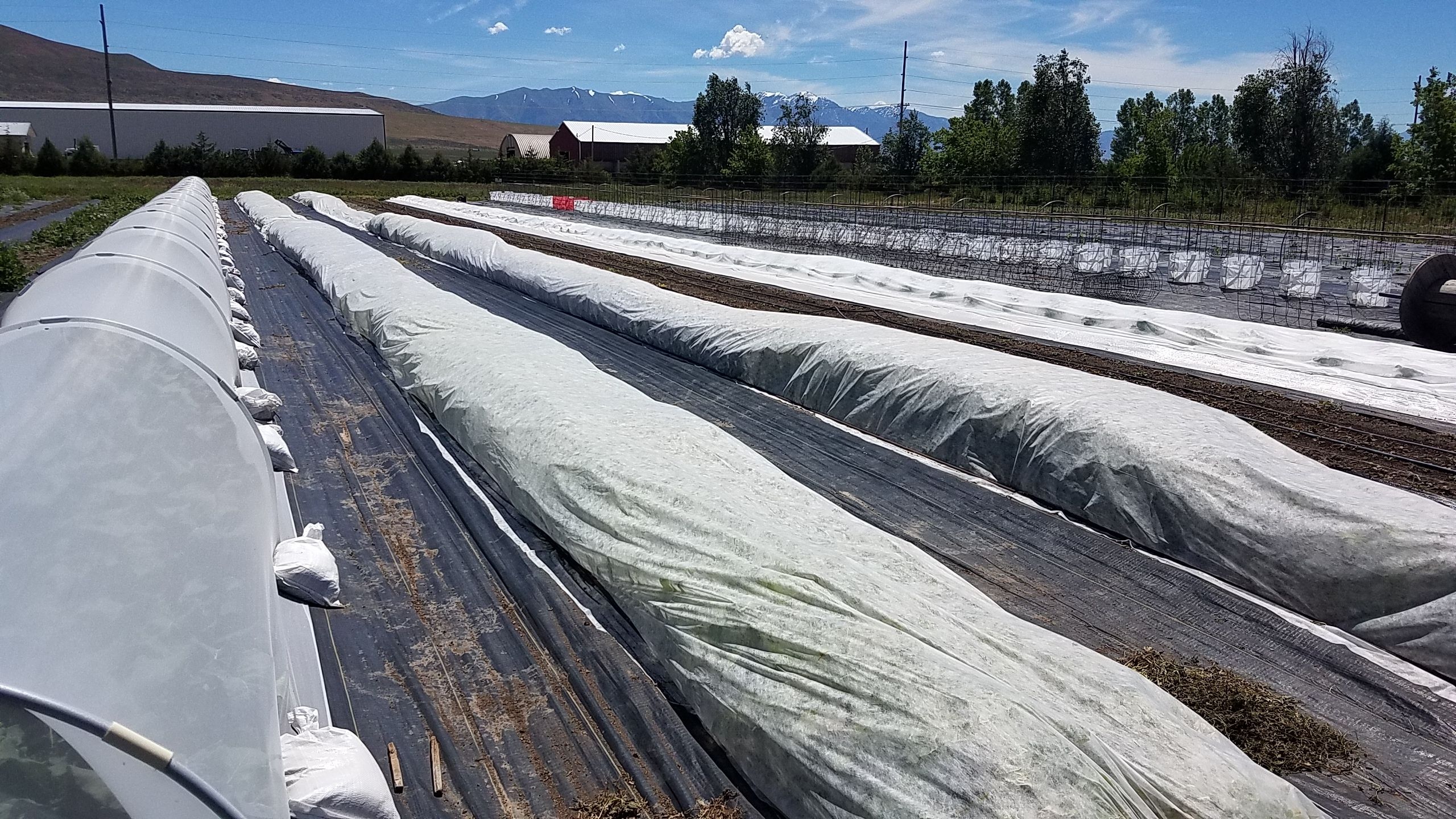General Concepts of Biological Control
July 2011
Diane Alston, Extension Entomologist (No longer at USU)
Definitions
Natural Control
“Balance of Nature.” Virtually all pest populations are affected by natural enemies to some extent. In many cases, natural enemies are the primary regulating force of the pest populations. Natural controls include effects of natural enemies (predators, parasites, pathogens), other biotic (living) factors such as food availability and competition, and abiotic (non-living) factors such as weather and soil.
Biological Control
“Any activity of one species that reduces the adverse effect of another.” In pest management, biological control usually refers to the action of parasites, predators or pathogens on a pest population which reduces its numbers below a level causing economic injury. Herbivorous insects and pathogens that attack pest weeds are also considered biocontrol agents.
Biological control is a part of natural control and can apply to any type of organism, pest or not, and regardless of whether the biocontrol agent occurs naturally, is introduced by humans, or manipulated in any way.
Biological control differs from chemical, cultural, and mechanical controls in that it requires maintenance of some level of food supply (e.g., pest) in order for the biocontrol agent to survive and flourish. Therefore, biological control alone is not a means by which to obtain pest eradication (Fig 1).

Important Characteristics
- Often relatively inexpensive and can be “permanent” for those biocontrol agents that can survive multiple years and become self-perpetuating.
- Effectiveness can be from low to high.
- Can be disrupted by other pest management tactics, especially broad-spectrum pesticides.
- Suppressive effects are density-dependent; it will have its greatest impact when pest densities are high.
- Often pest-specific, not broad-spectrum.
- Often a lag time between buildup of the pest population and buildup of the biocontrol agent (see Fig. 1); generally not fast-acting.
- Good tactic to include in a multi-tactic approach (IPM); fits in well with cultural, mechanical, and some chemical controls.
- Most successes have been in perennial crops (orchards, vineyards), rangeland, and field or forage crops which can withstand a moderate level of pest injury.
General Methods
Biological control agents can be purchased from commercial suppliers and released for supplementary control of pests. However, most biological control occurs without assistance from people. Many predators, parasites and pathogens occur naturally and are continually working to help keep nature in balance. The importance of natural enemies is often not appreciated until a broad spectrum pesticide, which kills many beneficials as well as the targeted pest, is applied and a new pest – suddenly released from biological control – becomes a serious problem. Conservation and enhancement of natural enemies already present in the system can be a very effective method of biological control.
1. Introduction = Importation
This is the “classical method” of using biological control. It has been used most for introduced or “exotic” pests. The origin of the pest is determined and then a search for natural enemies in its native habitat is conducted. Potential biocontrol agents are imported to the new location of the pest and released. Generally, the hope is for permanent establishment of the natural enemy.
Classic insect example: In 1888, importation of the Vedalia beetle (predaceous lady beetle) from Australia to California citrus groves for control of the Cottony cushion Scale. The scale is native to Australia
2. Augmentation = Mass Culture or Collection and Release
Inundative Release – a single release of large numbers of a natural enemy; release can be in a small or large area; natural enemy does not become established and reproduce; goal is a one-time reduction in pest numbers.
Inoculative Release – multiple, smaller releases of a natural enemy over a period of time; natural enemy is expected to colonize and spread in the area of release.
3. Conservation and Enhancement
Utilization of practices that protect, maintain and enhance already existing natural enemy populations. Such practices could include habitat diversification to provide additional shelter or food for a natural enemy, provision of artificial food supplements, use of pesticides that are selective for target pests and have minimal effects on natural enemies, avoiding cultural practices that disturb or destroy natural enemies, etc.
Agents of Biological Control
Adults feed individually, while larvae tend to destroy host plants in groups. Both stages are phytophagous, meaning they create holes within leaves or cause complete defoliation (Fig. 5). This may reduce plant vigor, photosynthesis, and yield in tomatillos. Like other leaf beetles, the three-lined potato beetle evolved a physiological pathway to avoid/tolerate the lethal tropane alkaloids found in various nightshade plants.
1. Parasites and Parasitoids
Parasite – an organism that lives in or on the body of another organism (the host) during some portion of its life cycle.
Parasitoid – an arthropod that parasitizes and kills another arthropod (insects, mites, spiders, and other close relatives) host; a parasitoid is parasitic in its immature stages and free living as an adult.
Parasitoids have been used in biological control more than any other type of agent. The major types of insects that are parasitoids: wasps, flies, some beetles, mantisflies, and twisted-winged parasites.
Adult female parasitoids lay their eggs inside the host (the host arthropod is usually in its immature stage) by penetrating the body wall with their ovipositor or they attach their eggs to the outside of the host’s body.
2. Predators
Predator – “Free-living animal that feeds on other animals (prey); it may attack prey in both its immature and adult stages; usually more than one prey individual is required for the predator to complete its life cycle.”
Major types of animals that are predators: birds, fish, amphibians, reptiles, mammals, arthropods, and some plants (e.g., Venus fly trap). Major types of insects that are predaceous: dragonflies and damselflies, mantids, true bugs, some thrips, lacewings and relatives, beetles, some wasps and ants, and some flies. Spiders and some mites are also important predators of arthropods.
3. Pathogens
Use of microbial pathogens has become a very popular method of pest management. Major pathogens used in biological control of insects:
Bacteria – Bacillus thuringiensis = Bt (many caterpillar pests, beetles, mosquitoes, others).
Viruses – Nucleopolyhedrosis viruses (Gypsy moth, European corn borer), granulosis viruses (Codling moth).
Fungi – Metarhizium (cockroach motels), Beauveria bassiana (Colorado potato beetle, Corn rootworms).
Protozoa – Nosema locustae (grasshoppers).
Nematodes – Steinernema and Heterorhabditis spp. (Soil weevils, Stem-boring caterpillars).
4. Herbivorous Insects and Microbial Pathogens of Weed Pests
Numerous species of plant-feeding insects have been evaluated for control of pest weeds. The greatest successes have been in rangelands, forests, and other natural habitats where other weed control approaches (e.g., herbicides, cultivation) are impractical or uneconomical. Some pathogens have also been looked at as weed biocontrol agents (e.g., plant rusts). The goal when using a weed biocontrol agent is generally one of weed population reduction and not eradication. Importation of a biocontrol agent from the region of origin of the weed has been the most common approach. It is generally a long-term process which requires sustained efforts, but which can reap long-term benefits.
Some classic examples:
- Importation of a moth to control prickly pear in Australia; the larvae bore into the stalk of the cactus allowing entry of secondary disease organisms.
- Introduction of a leaf-feeding beetle to control Klamath weed in the western U.S.
Related Research


